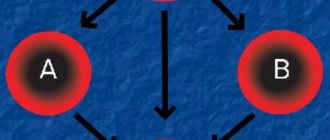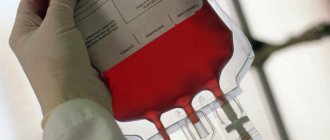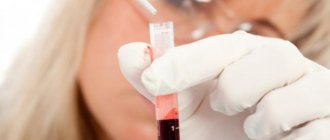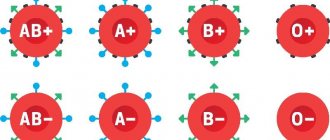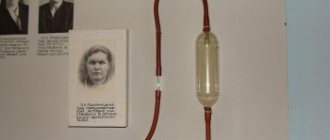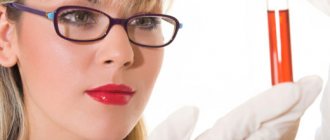Blood is the main carrier of information about the human body. Today, there are 4 groups and 2 types of this substance. Each blood group has its own characteristics. In addition, it is this component that helps to develop certain character traits and preferences in a person. Today we have to understand what 2 positive blood group is. Characteristics, compatibility and nutritional features are the topics that will be covered next. All the information offered to your attention may pleasantly surprise you. Few people even think about how a person’s blood affects his life.
Total information
Blood is the most informative unit of the human body. Her group is a genetic trait that does not change throughout life. No matter the circumstances, the blood always remains the same. It is laid in a person in the womb, and then accompanies the citizen throughout his life.
Today in science there are, as already mentioned, 4 blood groups: first, second, third and fourth. Blood group 2, according to statistics, is the most common. About 1/3 of the entire population of the Earth are its owners. This blood is often called the blood of landowners. This group is considered the oldest, it existed even before the mixing of human races.
Character traits
The second blood group is the most common antigenic composition. Its owners have the following character traits:
- calm;
- perseverance;
- softness;
- durability.
Since certain sequences are programmed in a set of genes, patients with the second blood group are characterized by certain diseases. It is recommended to first identify their list, following prevention methods. Then they can be warned in a timely manner.
If the owner of the second blood group wants to get married and have a child, it is recommended to take into account the hereditary characteristics of the partner. This can affect the baby’s health and make changes in his life. But even if husband and wife have different sets of antibodies and antigens, there is no need to despair. It is only important to know this information so that medical workers can promptly prevent undesirable consequences and save the life of the child and mother during pregnancy.
Interesting Facts
As already mentioned, there are 2 types of blood - positive or negative. The most common option is the first. 2 positive blood group, the characteristics of which will be presented below, is present in a larger number of the population around the world.
It is noted that this type of blood appeared only after the 1st. Some suggest that this is related to the development of humanity. Primitive people were able to eat carbohydrates. They began to engage in gathering and farming. During this, the 2nd blood group was formed.
If you briefly describe people with this “substance”, you will notice that they are sociable and flexible. In addition, they tend to idealize the world. People with blood type 2 are excellent organizers.
Diet and sport
Taking into account the usefulness and compatibility of products (Table 4), various diets have been developed, in which the main emphasis is on plant foods.
If in sports, positive dynamics of weight loss and improvement of the body are observed when practicing yoga, callanetics (this is a selection of static exercises aimed at contracting and stretching muscles), Pilates, and athletics.
About genetics
Now a little about the genetic properties of the studied information unit of the human body. The second blood group is designated as A (II). This is exactly the interpretation proposed in the AB0 system. The only thing that distinguishes this blood group is the presence of A-antigens in red blood cells.
In order for the properties of an information unit to be inherited by a child, one of the parents must have a similar antigen. Accordingly, positive blood group 2, the characteristics of which are given below (and negative ones too) can be combined with other blood. There are 3 different combinations in total.
It is necessary to understand genetic characteristics at the stage of planning a child. The thing is that problems with conception often occur due to the characteristics of the parents’ blood. In addition, complicated pregnancy and health problems in the child can also be associated with blood. Especially with the Rh factor.
If the baby’s parents have the same antigens, then the child will definitely inherit them. Otherwise, the strongest component will “win.” It can come from either the mother or the father.
Second group by inheritance
The child will inherit the second group if one of the parents is a carrier of the A-antigen. The following combinations are possible:
- second and fourth (A2+AB4),
- second and first (A+0),
- second and third (A+B),
- fourth and first (AB+0),
- fourth and third (AB + B).
The probability as a percentage can be tracked in the table (see Table 3).
Table 3. Inheritance of blood groups, %.
| Mother | Dad |
| First (I) | Second (II) | Third (III) | Fourth (IV) | |
| First (I) | I – 100% | I – 50% | I – 50% | II – 50% |
| II – 50% | III – 50% | III – 50% | ||
| Second (II) | I – 50% | I – 25% | I – 25% | II – 50% |
| II – 50% | II – 75% | II – 25% | III – 25% | |
| III – 25% | IV – 25% | |||
| IV – 25% | ||||
| Third (III) | I – 50% | I – 25% | I – 25% | I – 25% |
| III – 50% | II – 25% | III – 75% | III – 50% | |
| III – 25% | IV – 25% | |||
| IV – 25% | ||||
| Fourth (IV) | II – 50% | II – 50% | I – 25% | II – 25% |
| III – 50% | III – 25% | III – 50% | III – 25% | |
| IV – 25% | IV – 25% | IV – 50% |
A combination of the first and third blood groups will never give a second blood group - this factor is often taken into account in forensic examinations to establish paternity or maternity.
Blood type of parents and children
Next we will talk about what blood type babies can get. It depends on many factors. Suppose the parents have 2 positive blood group. What will the child have?
In order to answer this question correctly, it is necessary to thoroughly study genetics. But for ordinary people, scientists have come up with various calculators and compatibility tables.
If the parents have blood type 2+, most likely the child will also have A (II). But the Rh factor can be negative. In addition, it is possible that the baby will have blood type 1. This is normal, although very rare. It occurs in approximately 6% of cases.
To be able to give birth to a baby with blood type 2, the following combinations of this substance must be present in the parents:
- 2nd and 4th;
- second or fourth + 1st (without antigen);
- fourth or second + 3rd.
Parents with blood types 1 and 3 will never produce a child with blood types 2. All this is due to the lack of antigens. Such a combination is a reason for a medical examination. The point is that if the mother and father have blood types 1 and 3, they cannot be the parents of a baby with group 2.
Blood classification AB0
At the end of the 19th century, blood tests were carried out to determine its antigenic composition. Scientists realized that the surface of red blood cells contains antigens and antibodies that can be used to characterize a person. Since the second blood group has antigen A on the surface of red blood cells, it is called AB0.
Blood group 1 comes first; it is the most common. After it comes the second group, which is possessed by up to 40% of the population.
Blood compatibility during transfusion
But this is not all the interesting and important facts. 2 positive blood group, the characteristics of which will be fully studied further, has its own characteristics of compatibility during transfusion. It is at this moment that the Rh factor must be taken into account. Any blood transfusion center clarifies the donor’s blood type before starting the process. Otherwise, you may lose the patient.
The 2nd positive blood group does not have very extensive compatibility. This means that not everyone can transfuse it. Such people can act as donors for patients with 2nd or 4th positive blood groups. As a recipient, citizens with group 2+ can receive blood groups 1 and 2. In this case, the Rh factor can be anything - both positive and negative.
A+ does not combine with other blood in any way. As already mentioned, this blood group has very limited compatibility. This fact should be taken into account by all healthcare professionals.
Why take into account rhesus
If there is a need for a blood transfusion, an additional check is carried out between the donor and recipient for Rh compatibility.
A recipient with a second blood group can only be transfused with blood of the same type and Rh. In an emergency situation, infusion of the first Rh-negative group is permissible, but individual compatibility is strictly controlled.
Rhesus matching problems arise in women during pregnancy. Obstetricians strictly check tests for the Rh factor in future parents due to possible incompatibility between mother and fetus. This situation is possible if the woman tests negative and the man tests positive. It is impossible to predict in advance whose gene the fetus will select.
There is no danger to pregnancy if the child is negative like the mother.
Inheritance of a positive Rhesus father will lead to a rejection reaction on the part of the mother's body. The mother's immune cells recognize the fetus as a foreign agent and begin to fight against it. The result is an early interruption.
Diagram of Rh conflict
The most difficult situation occurs during the second and subsequent pregnancies. In primiparous women, antibodies accumulate only towards the end of pregnancy. Therefore, obstetricians always advise against having the first abortion. And with the following options, a high concentration of antibodies is found in the mother already at the beginning of the term.
During pregnancy, a woman donates blood several times to test for antibodies. This is a necessary analysis and should not be avoided.
To eliminate the danger, there is an available treatment with anti-Rhesus globulin. It is administered to a woman in the first three days after childbirth or abortion. This method does not disrupt the course of subsequent pregnancies.
Blood and character
2 positive blood group, the characteristics of which are presented to our attention, endows its carriers with certain character traits. Some believe that it is blood that influences human behavior.
People with the 2nd positive blood group have a decent attitude towards loved ones, friends and relatives, a tendency to work in groups, sympathy and care for those who are dear to them.
Such people are excellent leaders. Only in reality they usually give primacy to others. People with A+ dream of recognition and leadership, but carefully hide it. Such behavior often leads to internal feelings and stress.
Rh factor
Another important indicator for blood is called the Rh factor. Both Rh negative blood and Rh positive blood are known for each group.
What is the Rh factor, or Rh? This is a specific substance, which is also known as antigen D. It can be present on the surface of the red blood cell, and then it is Rh+, or absent, that is, it will be Rh negative.
What does the Rh factor depend on? It is determined by heredity, just like blood type. My fellow experts carried out an analysis and confirmed: a positive indicator is much more widespread in the world, a negative Rh is not so common.
Experience shows that it does not affect the quality of blood in any way. In my work, I always take into account the Rh negative or zero Rh factor during transfusions and when pregnancy occurs.
So, simply put, the Rh factor is a possible cause of problems in cases where the blood type matches, but this indicator does not.
I am often asked: how to determine the Rh factor? I personally usually perform a simple analysis on newborns and enter the relevant data into medical documents. Of course, you will not be able to identify the Rh factor on your own, so seek help from a specialist.
About choosing a profession
Who is the best person to work for carriers of the 2nd positive blood group? To do this, you need to pay attention to the characteristics of a person’s character. Nature has come up with many professions for such people.
All the previously mentioned features should not be overlooked. People with blood type 2 (positive) are excellent teachers, doctors, and social workers. They work wonderfully with personnel and can help in election campaigns. It is in these areas that it is recommended to choose a profession for such citizens.
What foods are best not to eat?
The second blood group and negative Rh were the result of people switching to eating mainly food of plant origin. It is easier for the digestive system of such people to process plant foods than animal foods. It's all because of the history of the development of this group.
Diet by group
At the dawn of their formation, after a long period of eating only meat, people began to include more agricultural products in their diet. Therefore, meat began to be included in the diet in smaller quantities, which led to changes in digestion.
Group 2 (Rh-) was formed precisely at this stage, so modern people should take this into account.
Recommended products that have a beneficial effect on the health of people with the second negative group are:
- Dairy and fermented milk products;
- All types of vegetables and fruits;
- Soy;
- Cereals;
- Beans;
- Various types of cereals;
- Dietary poultry meat;
- Low-fat fish varieties;
- Juices;
- Green tea.
A diet based on such foods can improve health, as they will ensure the normal functioning of the digestive system. People with group 2 (Rh-) should remember that excessive consumption of red meat, fatty and heavy foods will provoke the development of diseases of the gastrointestinal tract, liver, kidneys, heart and blood vessels.
During pregnancy 2, a negative blood group in women means a diet that is based on dairy and fermented milk products, vegetables and fruits. Simple combinations of foods of plant origin will help a woman endure pregnancy more easily, but meat should not be completely excluded.
The health of people with a negative second blood group is negatively affected by the use of:
- Pork;
- Sahara;
- Bakery products;
- Black tea;
- Fatty dairy products.
Eating too much flour, sugar and fat is bad for everyone, so these foods should be minimized in your daily menu.
Health risks
But this is not all the interesting and important facts. The compatibility of blood groups 1 and 2 (positive) is now clear. Moreover, it is now clear what character traits the carriers of this informational genetic unit are endowed with. An extremely important point is the health status of a person with A+.
Some believe that blood type has a serious impact on the human body. In addition to character traits, people acquire certain vulnerabilities. For example, such citizens have the following characteristics:
- low immunity that occurs due to infections, stress, poor diet or physical activity;
- increased blood clotting;
- tendency to thrombosis;
- impaired absorption of proteins and fats;
- low stomach acidity.
Accordingly, 2 positive blood group, the compatibility of which we already know, gives a person the following vulnerabilities:
- diseases of the cardiovascular system;
- allergic reactions;
- increased susceptibility to foodborne infections;
- predisposition to gastritis, pancreatitis;
- risks of developing malignant tumors.
Perhaps these are all the health features that need to be remembered. What else important can you learn about people with positive blood group 2?
Predisposition to disease
Since blood types were discovered in patients, studies have been conducted to identify predispositions to diseases. If patients know in advance what pathologies can be provoked in connection with their blood type, they will be able to carry out successful prevention methods.
Owners of the second blood group may develop the following pathologies of different body systems:
- Digestive tract
. People often develop inflammatory pathologies of the stomach and pancreas. The stomach can produce hydrochloric acid with a low degree of acidity. Because of this, stones form in the gallbladder, causing inflammatory processes that develop into cholecystitis. - The cardiovascular system
. Patients are prone to congenital heart defects and ischemic vascular conditions. The latter deviation can turn into a heart attack or stroke. Vascular blockage often develops due to chronic thrombosis and atherosclerosis. - Blood system
. Patients with the second positive blood group are characterized by cancer, leading to acute leukemia. - Urinary system
. Stones form in the bladder, causing acute urolithiasis. - Thyroid
. Hormone levels change. - Systemic infections
. Patients are predisposed to food and toxic poisoning. - Oral cavity
. Caries, stone deposition, periodontitis, and periodontal disease often form. - Oncological pathologies
. In addition to leukemia, stomach cancer can form.
People with a positive blood group have a reduced metabolism. Therefore, they are prone to the deposition of body fat and obesity.
About nutrition
For example, it is recommended to pay special attention to nutrition. For the category of people under study, it implies a gentle regime. How should nutrition be organized according to blood type? 2 positive (the table of permitted products will be presented below) blood is not only a tendency to leadership, but also an organization for the prevention of obesity.
Accordingly, you need to eat right. It is noted that many people with A+ tend to be vegetarians. Their main diet is vegetables and fruits. Vegetable oils are also beneficial. For example, flaxseed or olive. Cereals allowed for consumption are buckwheat, rice, millet, barley. Don't forget about beans and lentils either. A+ cereals are a great menu item.
Among vegetables and fruits, preference should be given to those that enhance the formation of gastric juice. For example: cherries, oranges, apples, pineapples, beets, carrots, bell peppers, cucumbers. Spices are not recommended. You can leave only the mustard.
Drinks recommended for all carriers of blood type 2+: coffee, tea, sour juice, wine (red).
Seafood and delicacies can be consumed, but in limited quantities. Garlic, ginger, soy sauce and drinks with malt are also not recommended. Despite this, they are not prohibited. Soy substitutes are allowed to be used without restrictions.
